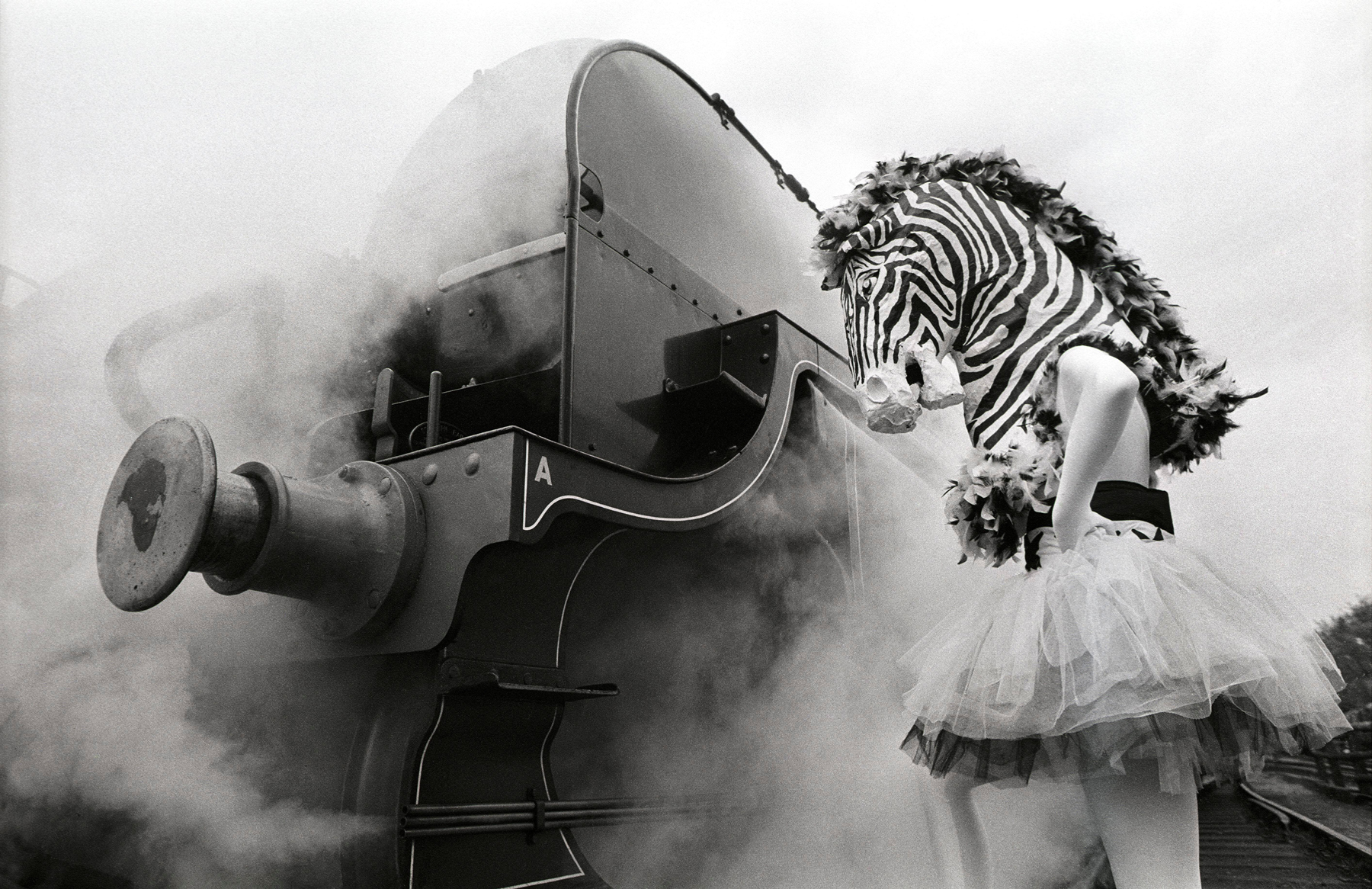Knowing where to stand in the happen-chance of life is one of life’s great mysteries. It’s also a gift when one’s timing isn’t off.
This photograph by Roger Bamber taken in 1993 of is one of those to be admired for its brilliant composition and timing, where the juxtaposition of all the elements – the slightly concealed face of a shiny old steam train and the strange zebra-head-on-human-tutu-wearing-body coming to greet it through the smoke – is what makes the image so surreal and us so curious.
Eve Davies rehearses her role as a Zebra in Limn Gaza's 'The Joy Of Return' on the Bluebell Railway, Sheffield Park, East Sussex, 11th May 1993. Photograph by Roger Bamber.
No doubt there are now AI software tools that someone would have the thought to change the position of the person or show the train at a different angle to aim for some kind of ‘perfecting’ vision that’s ‘just right’ or could make it ‘better’. But you’d be mistaken in thinking that manipulation of images in this way or using the image to make a mediocre derivative of one almost the same with a different context, would somehow mean you’re doing something incredibly original or more creative (let alone that you’d have any scruples).
Orson Welles said that “the enemy of art is absence of limitations” and this is truer today now with the development of AI image generation tools. A person who wants to make an endless number of images probably doesn’t have anything very interesting or meaningful to say. Many of us know how Welles’ quote has been proven time and time again, including when Steven Spielberg realised that not showing the mechanical shark prop too many times in the final edits of Jaws (1975) would make the film so much more thrilling. Instead he created suspense knowing the imagination of the audience would fill in the gaps.
The photo I’ve shared shows a cast member of a Limn Gaza play The Joy of Return rehearsing on the platform of the Bluebell Railway at Sheffield Park, East Sussex as part of Brighton Festival. Now we understand it has context and meaning too. It’s also what makes the image original to the photographer – if anyone can make what you can make and you don’t have a thought or style of your own or you weren’t really there – then it can’t be very original to you, or anyone else!
Bamber learnt his skill over many years and his ability to remain ever curious to see and share the real world with a sense of humour, in combination with the time he lived in is what makes his work so brilliant and unique. It’s what makes the unusual combination of subjects in this image so compelling. Knowing where to stand using individual experience (having lived a little bit) to capture the real world creatively is nothing to be underestimated.
Photography gives us ‘real world first’ perspectives, and as such is still one of the most original and creative forms of image making. The now-presumed ‘limits’ of a camera lens is what forces the photographer to think creatively and develop their expertise. Living, seeing and capturing the world around you through photography and traditional art forms is what really pushes the boundaries of what it means to be original and creative.
Because if you can’t skilfully capture or accept what the real world looks like, then you’re probably standing in the wrong place.
If you want to see more of Roger Bamber’s work, check out his collection on Alamy here. You can learn about him and his contribution to photography here. At Alamy we don’t accept AI-generated imagery, and you can find out more about why we’re committed to championing authentic content here. For more insights into how our photographers work be sure to catch up monthly on our contributor spotlights page.
